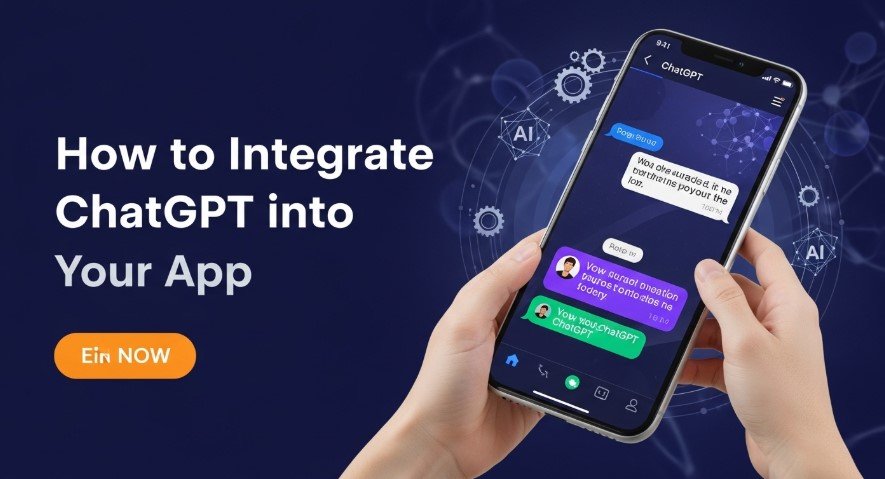Integrating ChatGPT into your app can make it more interactive and efficient. This guide provides clear steps to add ChatGPT using OpenAI’s API, ensuring your app delivers natural, AI-powered conversations. It’s designed for developers and business owners, offering practical advice and best practices.
What is ChatGPT?
ChatGPT, built by OpenAI, is an AI tool that uses natural language processing (NLP) to generate human-like responses. It’s based on the GPT architecture, which learns from vast text data to understand and respond to queries. Unlike rule-based chatbots, ChatGPT handles complex conversations and maintains context. The latest model, GPT-4o, supports text, images, and more, as updated in 2024.
Why Integrate ChatGPT?
Adding ChatGPT to your app offers key benefits:
- Improves user experience with natural conversations.
- Automates customer support, saving time.
- Personalizes responses based on user data.
- Scales to handle many users at once.
- Gives your app a competitive edge.
A 2023 study found 48% of businesses using ChatGPT saved over $50,000 due to efficiency gains.
Step-by-Step Guide to Integrate ChatGPT
Follow these steps to add ChatGPT to your app:
Step 1: Set Up an OpenAI Account
- Go to OpenAI’s website and sign up.
- Access the API section and generate an API key.
- Store the key securely to prevent unauthorized access.
Step 2: Choose Your Integration Method
You have three options:
- Code It Yourself: Use the API with languages like Python or JavaScript for full control. Best for developers.
- No-Code Platforms: Tools like Zapier connect ChatGPT to your app without coding. Supports over 8,000 apps.
- Hire Experts: Use services for custom solutions, ideal for complex projects.
Step 3: Design the Chat Interface
Plan how users will interact with ChatGPT:
- Decide placement (e.g., pop-up or sidebar).
- Choose features like text, voice, or image inputs (GPT-4o supports images).
- Ensure the design is user-friendly and matches your app’s style.
Step 4: Connect the API
- Send user inputs to the ChatGPT API via HTTP requests.
- Parse the API’s responses and display them in your app.
- Use OpenAI’s documentation for code examples.
Step 5: Test and Launch
- Test the integration for accuracy and speed.
- Deploy to your app (web, iOS, or Android).
- Monitor user interactions to fix any issues.
Step 6: Prioritize Security
- Store API keys in environment variables.
- Follow GDPR or other privacy laws to protect user data.
- Rotate API keys regularly for safety.
Best Practices
- Define Use Cases: Focus on specific tasks like support or recommendations.
- Keep It Simple: Make the chat interface easy to use.
- Handle Errors: Show clear messages for any issues.
- Gather Feedback: Use user input to improve the system.
- Monitor Usage: Track API costs and performance.
Advanced Features
Enhance your integration with:
- Custom Prompts: Set specific instructions for ChatGPT’s tone.
- Multilingual Support: Serve users in different languages.
- App Integrations: Connect with tools like Google Drive.
- Context Memory: Keep conversation history for better responses.
- New Features: Use 2024 updates like Record Mode for meetings or Work with Apps for coding.
Use Cases
ChatGPT works in many industries:
- Customer Support: Answers FAQs instantly.
- Virtual Assistants: Helps with scheduling or reminders.
- Education: Offers personalized tutoring.
- E-commerce: Recommends products to boost sales.
- Social Media: Manages community interactions.
Costs and Time
Integration costs and time vary:
| Complexity | Cost Range | Time Estimate |
|---|---|---|
| Simple | $5,000–$15,000 | 2–4 weeks |
| Medium | $20,000–$50,000 | ~1 month |
| Complex | $50,000–$150,000+ | 3–6+ months |
API costs depend on tokens. GPT-4o charges $5 per 1M input tokens and $15 per 1M output tokens. Costs dropped 90% since 2023.
Conclusion
Integrating ChatGPT can make your app more engaging and efficient. Follow these steps, use best practices, and explore advanced features to create a standout product. Check OpenAI’s updates for new tools like GPT-4o to stay ahead. Start now to bring AI to your users.
Explore more:
